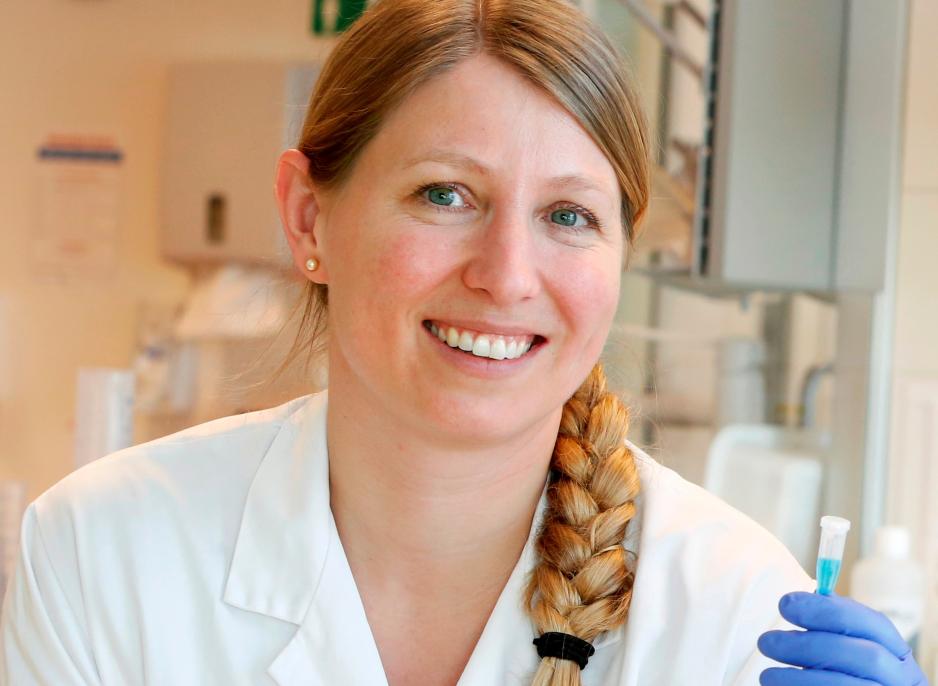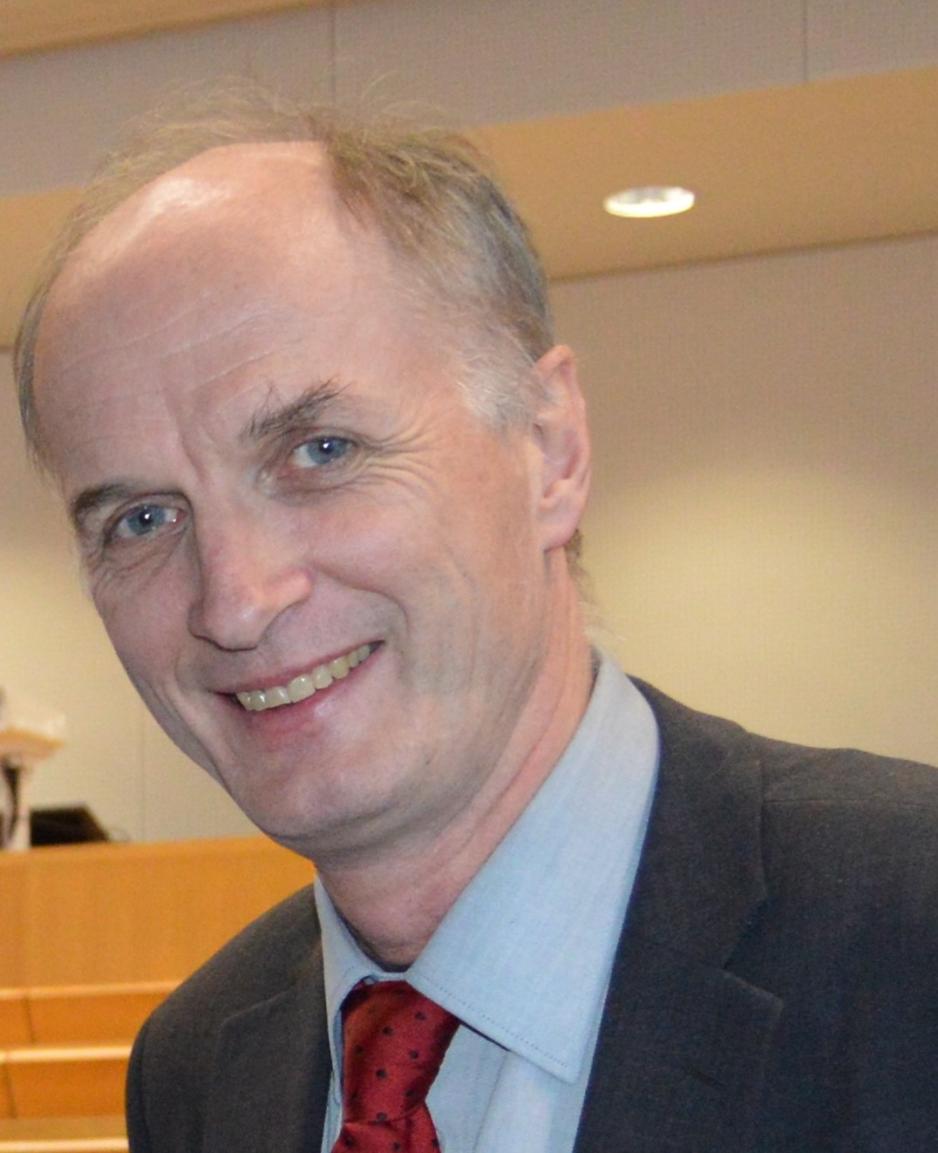“Gender imbalance in science prizes sends a negative signal”
Just a handful of Nobel Laureates are women, and the Abel Prize has been awarded only to men. What is needed to eradicate the gender differences in awards for outstanding research?
“It’s important to achieve gender balance among the recipients of science awards,” says Guro Elisabeth Lind. She is the vice chair of the Young Academy of Norway and member of the board of the newly established Letten Prize, whose objective is to fund outstanding, socially relevant research conducted by researchers under the age of 45.
“Gender balance among the recipients of such awards will show that women also have earned their well-deserved place. It’s not true that there are not as many highly qualified female as male candidates, except in a few fields. But when we see that discrimination occurs in this area as well, it sends a negative signal to women who want an academic career.”

Criticism of the Nobel Prize
Lind is not alone in her conviction that women should be recognized for their work in research to the same extent as men. In autumn 2017, the Guardian’s science correspondence Hannah Devlin argued for greater diversity among researchers who receive the Nobel Prize. She referred to the British physicist Athene Donald, who believes that “the demographic of winners perpetuates an entrenched stereotype of old white men being the only heroes in science”.
In a recent interview with Kifinfo, Curt Rice, the rector of OsloMet and chair of the KIF Committee, also said it is an embarrassment that the gender imbalance among the prize winners is as great as it is today.
The Nobel Prizes, which are prestigious awards covering many subject areas and which garner a lot of attention also from the public outside the research sector, have undeniably poor statistics when it comes to female prize winners. Since 1901, 585 prizes have been awarded to 923 recipients, but only 48 of them are women. Since Marie Curie won the prize for both chemistry and physics, the total number of Nobel Prizes awarded to women is 49.
“The worst in the class”
In general, there are major gender differences in the prizes that honour researchers in various subjects. Another example is the Abel Prize, which is awarded every year for outstanding work in mathematics. Since the first award in 2003, none of the winners has been a woman.
“The Abel Prize is the worst in the class. I don’t understand how it’s possible to do such a poor job that they have not managed to award the prize to a single woman. It’s not my field, but I’m sure there are talented female mathematicians who are qualified candidates. If they are motivated to have a gender-equal prize and advance women in the field, there are surely many good examples,” says Lind, who is a cancer researcher at Oslo University Hospital.
Kristian Ranestad, a mathematics professor at the University of Oslo and chair of the Abel Prize board, believes there are qualified female candidates to choose from.
“I’m sure there are many women who are nominated, and thus also assessed. Last year, the prize went to the French mathematician Yves Meyer, and there are female mathematicians who work in the same field. The best of the female candidates has held a key position among those who nominate committee members, and she has sat on the committee herself. There are impartiality rules that disqualify her from receiving the prize for a certain period of time.”
Ranestad emphasizes that the board of the Abel Prize is not involved in selecting the winners, but he defends the choices made by the international selection committee. He adds that the committee has almost always had female members.
“There it’s easier to find a balance. The candidates represent the breadth and depth of the field, and there’s a greater potential to take gender balance into account on the board than in the selection of the actual winners.”
“History can explain the gender imbalance”
According to Ranestad, the point is not to achieve a perfect balance between male and female prize winners, although he believes it is important that the Able Prize represents the breadth of the field and that it is unnatural if the gender imbalance is great.
“It’s a crucial topic, and although it’s easy to blame history, it can help to explain why there have been no female prize winners so far. This is a problem we see in academia as well, especially in natural science, technology and mathematics. It takes time to achieve better gender balance,” he says.

“It’s hard to assess the Abel Prize because it is only 20 years old and it’s given for one’s life work. I think the average age of the prize winners is well up into the 70s. There is a parallel prize, the Fields Medal, which has been regarded as the most important in mathematics. It’s awarded only to younger mathematicians, with an average upper age of 40. Since recruitment to the field is more balanced now than in the past, there should be a better chance of achieving gender balance among recipients of the Fields Medal. With that said, I don’t think it will take many years before we have a female winner of the Abel Prize,” says Ranestad.
Seeking change in gender equality work
Guro Elisabeth Lind is not as optimistic, and thinks change both in the gender balance among prize winners and in academia in general will not happen by itself if we just wait long enough.
“It has to do with recruitment methods and the criteria for how researchers are assessed. Quite simply, I believe there are fewer women nominated for the prizes and it’s not only men who favour men; women do it as well,” she says.
“It’s often discussed why academia loses the most highly skilled women, but I think we should ask ourselves instead why women should apply for academic positions at all. We don’t get the same amount of research funding as men, we don’t get positions, either at the professor level or tenure track positions, and we are not recognized when research prizes are awarded.”
Lind thinks that gender equality work in academia and the research sector is being addressed in the wrong way.
“Many offer mentoring programmes for women, as if there’s something wrong with our skills and that everything can be solved with a short course. This places the problem on women’s shoulders. They are given responsibility for succeeding in the system rather than exploring why the system fails to recruit from half of the population. The institutions must be held responsible, and this must be included in managers’ contracts. There are many beautiful words, but none are measured by the percentage of gender equality. If managers don’t succeed with gender equality, they don’t deserve a raise either.”
Evaluated on their own merits
According to Lind, the Letten Prize, which is a collaboration between the Letten Foundation and the Young Academy of Norway, is intended to be a gender-equal prize.
“This is a modern prize, so gender and diversity perspectives play a crucial role. We ensure that the board and evaluation committee are gender balanced, and we use our network to reach out as broadly as possible to applicants in all parts of the world. When awarding science prizes, there are many areas where differences between men and women can infiltrate. One thing we’ve paid special attention to is that there is often a nomination process in which letters of recommendation must be submitted.”
“For the Letten Prize, everyone can apply themselves, and all candidates are evaluated on their own merits. When candidates can nominate themselves, some of the academic power structure is removed,” says Lind.
Sceptical about quotas
Curt Rice has outlined what he calls an extreme and a moderate solution for improving the statistics on gender balance in awards for outstanding research, and in the Nobel Prize in particular. In the extreme version, only women are selected as prize winners for the next 10 years to send a clear signal, but the moderate version ensures that there are more women to choose from by requiring a gender-balanced shortlist of candidates.
“I don’t believe in those types of solutions,” says Kristian Ranestad.
“If a rule is made that the prize must go to a woman just to send a signal, then I would not want to be that prize winner. It’s important to consider the prize winner too. The reasoning must be crystal clear for everyone involved, and when a woman is selected to receive the Abel Prize, it must be uncontroversial and no doubt that there is nothing underlying it other than that the woman chosen is the best candidate.”
Guro Elisabeth Lind does not think either that it would be beneficial to ensure the Nobel Prize is awarded to women for a certain period of time.
“Women deserve a larger place than they have today, both in academia and in science prizes, but I don’t think it should come with the baggage that a woman won the prize because men were not eligible. It would absolutely help to increase the percentage of women, but it would likely not be valued as highly for the woman who ends up getting the prize,” she says.
“A better solution is to increase the chances for a female recipient by ensuring there are enough women on the short list. We don’t need to get rid of men to advance ourselves because we’re talented enough to deserve science prizes in competition with men.”
Translated by Connie Stultz.
The Nobel Prize
This annual prize was founded by the Swedish inventor and researcher Alfred Nobel. The prize is awarded in the categories of physics, chemistry, physiology or medicine, literature and peace. The size of the purse varies, but in 2010 it was SEK 10 million for each prize.
Since the first prize was awarded in 1901, a total of 585 prizes have been given to 923 winners. Only 49 prizes have been awarded to women. Marie Curie is the only woman who has won two Nobel Prizes, for physics in 1903 and for chemistry in 1911.
Thirteen Norwegians have won Nobel Prizes. Two of them are women: Sigrid Undset for literature in 1928 and May-Britt Moser for physics in 2014.
The Abel Prize
This is an international prize awarded annually to researchers with a distinguished record in the field of mathematics. The prize is awarded by the Norwegian Academy of Science and Letters, and is named after the Norwegian mathematician Niels Henrik Abel. The purse is NOK 6 million.
From the first award in 2003 to this year’s award, no woman has received the Abel Prize.
The Letten Prize
This is a newly established prize that will be awarded annually to a researcher under 40 years old who works in the field of health, development, environment or equality. The purse is NOK 2 million, and the first prize will be awarded on 13 September 2018.
The prize is named after the neurophysiologist Alette “Letten” Saugstad.

